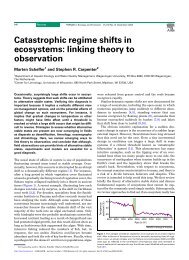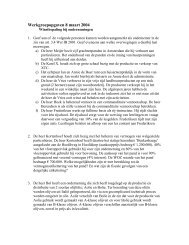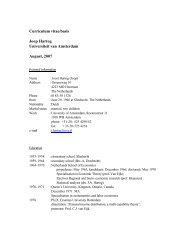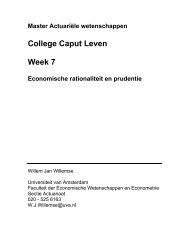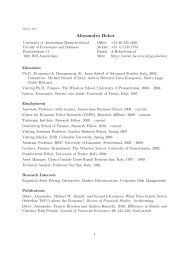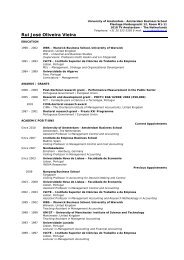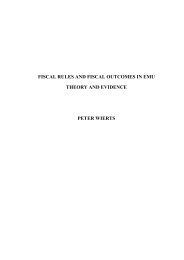How Do Corporate Venture Capitalists Create Value for ...
How Do Corporate Venture Capitalists Create Value for ...
How Do Corporate Venture Capitalists Create Value for ...
You also want an ePaper? Increase the reach of your titles
YUMPU automatically turns print PDFs into web optimized ePapers that Google loves.
We start with the probit analysis of round investments. The dependant variable is a dummy equal to<br />
1 <strong>for</strong> financing rounds backed by a CVC and zero otherwise. The independent variables can be classified<br />
into three groups. First, we analyze individual firm-round characteristics such as age of the<br />
entrepreneurial firm at the round date, round number, total amount required by the firm this round (log of<br />
total amount invested this round), and total amount of prior investment. These variables reflect the<br />
maturity of the portfolio firm as younger firms in the earlier rounds of their development are likely to<br />
have small prior investments and hence require larger investments this round.<br />
Second, we consider the entrepreneurial firm industry characteristics. Since we do not observe<br />
balance-sheet data <strong>for</strong> the portfolio firms we measure their industry characteristics using aggregate<br />
variables <strong>for</strong> already public firms. Specifically, based on an entrepreneurial firm’s SIC code we construct<br />
industry-wide variables by averaging the characteristics of public firms in the same industry in the year<br />
prior to the financing round. First, we consider capital and R&D expenditures that are likely to capture the<br />
growth option features of the industry. Second, sales growth over the three years prior to the financing<br />
round reflects past industry growth. Third, we compute the equal-weighted industry portfolio return over<br />
the six month prior to the financing round date to capture the effect of hot versus cold industries. Forth,<br />
we estimate the beta of the industry portfolio over the 36 months prior to the financing round date to<br />
capture the risk of the portfolio firms. Finally, to evaluate the degree of competition faced by the<br />
entrepreneurial firms we compute industry Herfindahl index and the market share of the largest firm in<br />
the industry based on prior year sales. These variables allow us to compare the industry characteristics of<br />
CVC backed versus IVC backed firms.<br />
Third, we consider the reputation of existing IVCs (discussed earlier). Since the dominant share of<br />
venture investments are follow on investments it is important to understand whether CVC are leaders or<br />
followers in an entrepreneurial firm, whether they invest when there is a high reputation IVC is already in<br />
charge or prefer to make the pioneering investment in a firm.<br />
The results of this probit analysis are reported in Table 2a. Panel A presents the results where the<br />
industry characteristics are constructed based on 2 digit SIC code industry definition. Panel B presents the<br />
13




